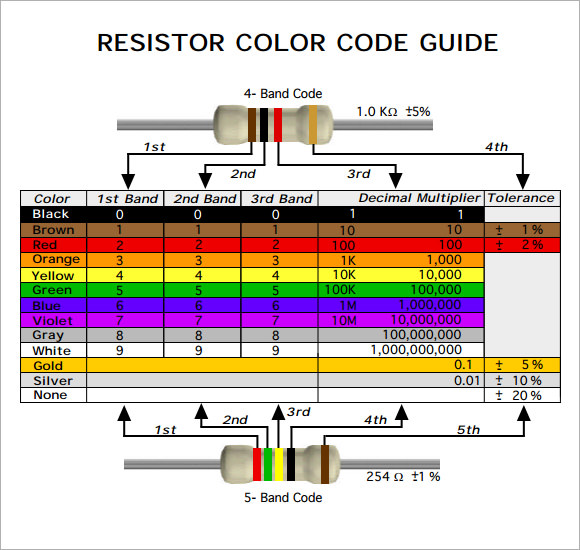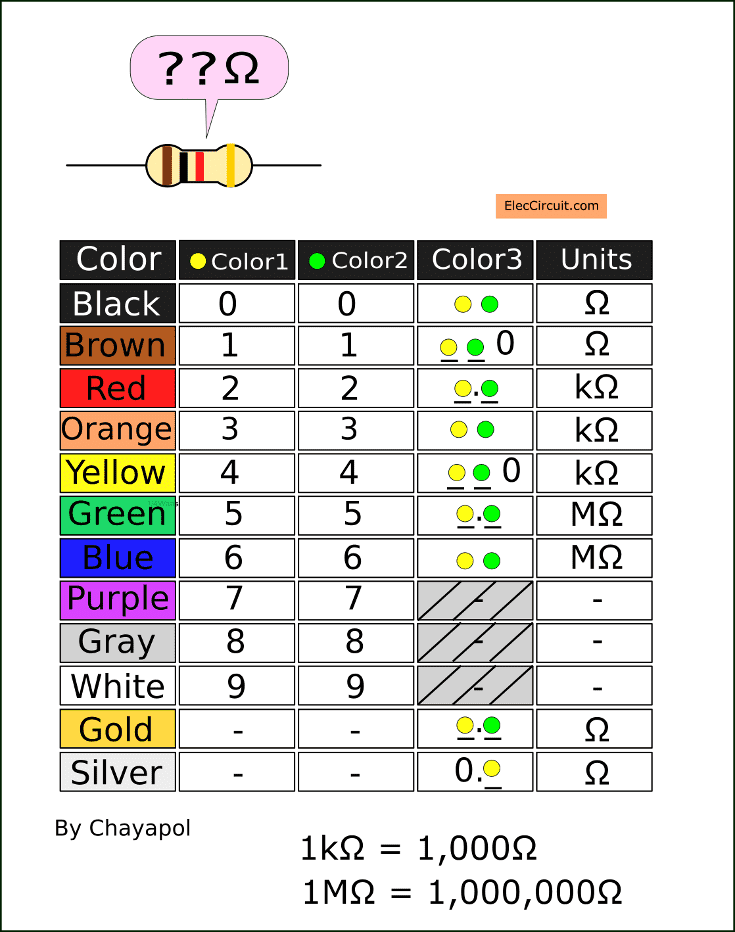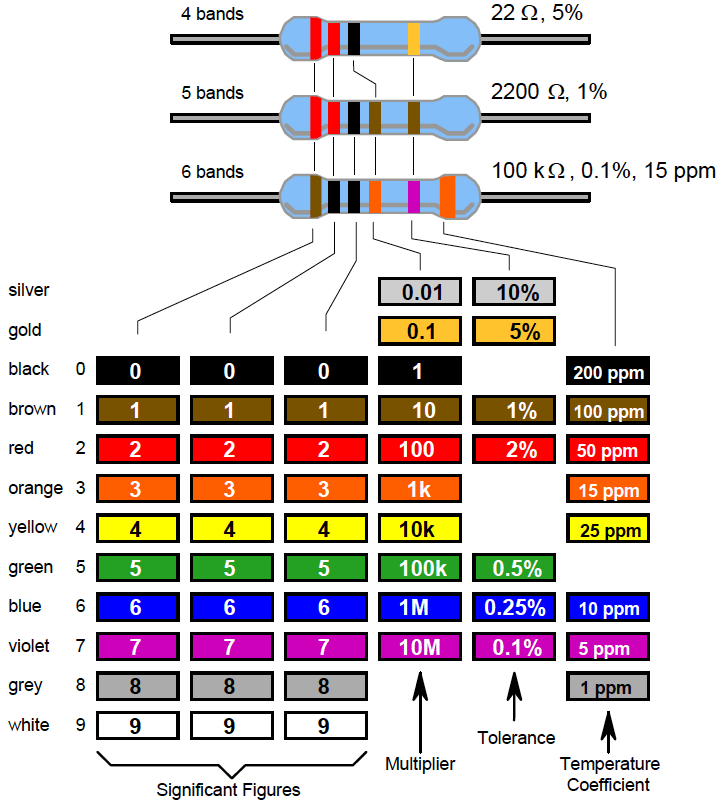
Electrical Engineering Science, Preston, 1960, p. The rainbow group is preceded by two low brightness colors, black and brown, representing the lowest digits 0 and 1, and succeeded by two bright colors, grey and white, representing the highest digits 8 and 9. The sequence of the central group of colors, ROYGBV, was chosen to match the rainbow mnemonic: red-orange-yellow-green-blue-violet, "ROYGBIV", without indigo because most people do not distinguish, with their eyes, a separate color between blue and violet. Instead, they were the body color, the tip color and the dot color, as in the diagram.

Initially the three colors were not three separate bands, and there was no neutral background color. The second stripe is violet, which means the next digit is a 7. The fourth band, representing the tolerance, was added later. Resistor Color Codes The first stripe is yellow, which means the leftmost digit is a 4. With that knowledge, realize that on a four-band resistor the third color will always be blue (106) or less and on a five-band resistor, the fourth color will always be green (105) or.

Basic resistor values range from 0.1 Ohm to 10 Megaohms. In addition, color bands remained visible in whatever position a resistor was soldered, whereas a stamped number value could be out of sight. Position the resistor with this band on the right side and again read your resistor from left to right. For example, 250 000 Ω was reduced to three bands. The three bands were more compact than the number value because the third band represented the number of zeroes. So according to the formula the resistance will be: 16 * 100 = 1600 Ohms or 1.6K Ohms with 5% tolerance.The color code was developed in the 1920's by the Radio Manufacturers Association (RMA) as a three band code for resistor values. Let’s take an example of a 4-band resistor with the colors given in the above image (brown, blue, red and gold). ‘ d’ represents the 4 th significant digit, which is the fourth band color of resistor and this is the tolerance value. ‘ c’ represents the 3 rd significant digit, which is the third band color of resistor and this is the multiplier value.

‘ b’ represents the 2 nd significant digit, which is the second band color of resistor. ‘ a’ represents the 1 st significant digit, which is the first band color of resistor. Just have a look to the resistor color code chart below and see the calculations, how the resistance value is calculated according to this chart.Ĭalculating resistance for a 4-band resistor To determine the value of a given resistor look for the gold or silver tolerance band and hold the resistor with this band to.

How to read it Resistors are color coded for easy reading. To calculate the resistance of a resistor, you can select the appropriate color bands in the above resistor color code calculator. Resistor Color Code 1st band color gives 1st number 2nd band color gives 2nd number 3rd band color gives of zeros 4th band color gives tolerance or ±. A resistor is identified by its pattern of color of bands.


 0 kommentar(er)
0 kommentar(er)
